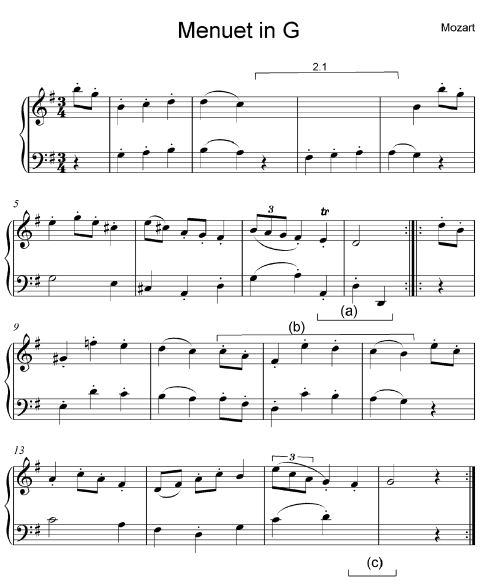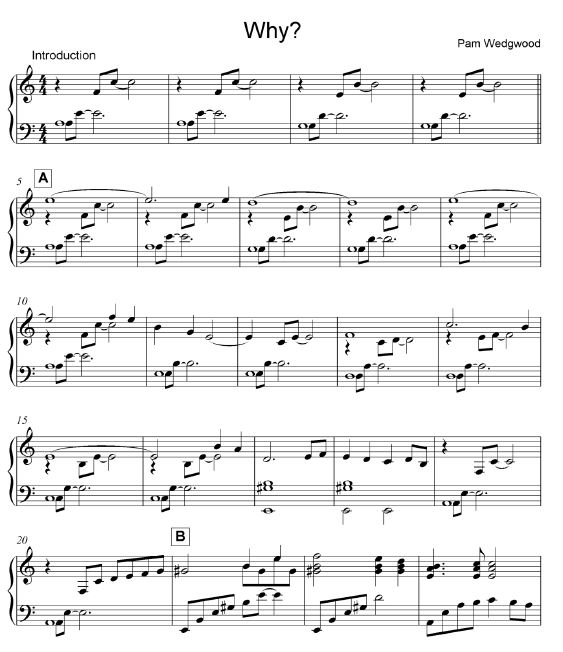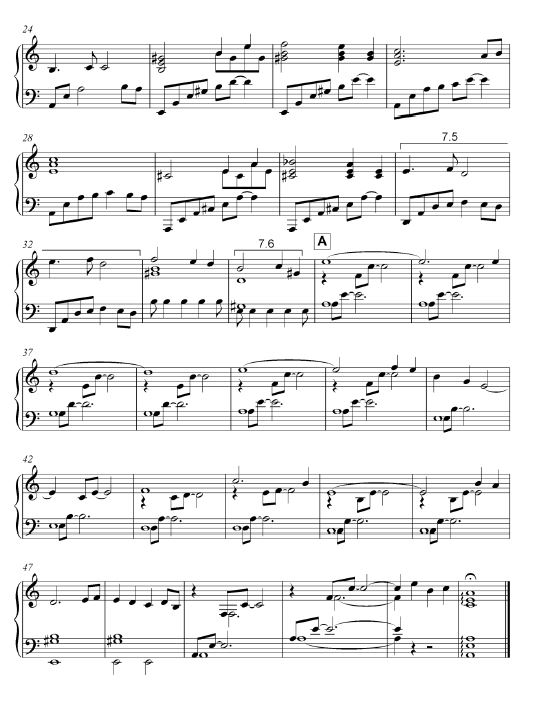MUSIC PAPER 2 GRADE 12 QUESTIONS - NSC PAST PAPERS AND MEMOS FEBRUARY/MARCH 2017
Share via Whatsapp Join our WhatsApp Group Join our Telegram GroupMUSIC
PAPER 2
GRADE 12
NSC PAST PAPERS AND MEMOS
FEBRUARY/MARCH 2017
INSTRUCTIONS AND INFORMATION
- This question paper consists of THREE sections:
SECTION A: Aural (10)
SECTION B: Recognition (12)
SECTION C: Form (8) - QUESTION 1, QUESTION 2, QUESTION 3 and QUESTION 7 are COMPULSORY.
- Answer QUESTION 4: Western Art Music (WAM) OR QUESTION 5: Jazz OR QUESTION 6: Indigenous African Music (IAM).
- Write ALL your answers on this question paper. Use a pencil for music notation and blue or black ink for the other answers.
- This examination will be written while candidates are listening to a CD. 6.
- The music teacher of the centre must conduct the examination in the presence of the invigilator.
- The last page of this question paper is manuscript paper intended for rough work. The candidate MAY NOT remove this page.
- Candidates may NOT have access to any musical instrument for the duration of this examination.
- Candidates must take note of the mark allocation at each question to provide enough information in their answers.
- Write neatly and legibly.
INSTRUCTIONS TO THE PERSON OPERATING THE SOUND EQUIPMENT
|
SUMMARY OF MARKS
SECTION A: AURAL | TOTAL |
QUESTION 1 (COMPULSORY) | 4 |
QUESTION 2 (COMPULSORY) | 6 |
SUBTOTAL | 10 |
SECTION B: RECOGNITION | TOTAL |
QUESTION 3 (COMPULSORY) | 4 |
QUESTION 4 (WAM) OR | 8 |
QUESTION 5 (JAZZ) OR | 8 |
QUESTION 6 (IAM) | 8 |
SUBTOTAL | 12 |
SECTION C: FORM | TOTAL |
QUESTION 7 (COMPULSORY) | 8 |
SUBTOTAL | 8 |
GRAND TOTAL | 30 |
QUESTIONS
SECTION A: AURAL
QUESTION 1
Play Track 1 TWICE in succession. |
1.1 Listen to the melodic and rhythmic phrase. Notate the rhythm of the missing notes in bars 3–4 below.
![]() (3)
(3)
Play Track 1 TWICE again. |
Play Track 2 THREE times in succession. |
1.2 Which ONE of the extracts below best represents the solo violin part? Make a cross (X) in the appropriate block.  (1)
(1)
[4]
Play Track 2 ONCE more. |
QUESTION 2
Play Track 3 ONCE to provide a general overview. |
Listen to the extract from Menuet in G by Mozart. Answer the questions that follow.
Play Track 4 TWICE. |
2.1 The notation of bars 23b–42 has been omitted at 2.1 in the score. Fill in the missing pitches on the score that correspond to the music that you hear. (3)
Play Track 5 ONCE. |
2.2 Name the cadence at (a) in bars 73–82. (The track starts in bar 1.) (1)
Play Track 6 ONCE. |
2.3 Listen to the music in bars 83–122. Which compositional technique is used at (b)? (The track starts in bar 83.) (1)
Play Track 7 TWICE. |
2.4 Complete the missing bass notes at (c) on the score. (The track starts in bar 123.) (1)
[6]
Play Track 8 for a final overview. |
TOTAL SECTION A: 10
SECTION B: RECOGNITION OF MUSIC CONCEPTS
QUESTION 3: GENERAL LISTENING (COMPULSORY)
Listen to the following tracks and answer the questions that follow.
Play Track 9 ONCE. |
3.1 Listen to the music and indicate ONE feature that you hear. Make a cross (X) in the appropriate block.
Pesante | Orchestra | Pizzicato | String ensemble |
(1)
Play Track 10 TWICE. |
3.2 Choose any ONE item in COLUMN A and briefly describe what you hear in COLUMN B.
COLUMN A | COLUMN B DESCRIPTION |
Tonality | |
Vocal technique | |
Voice type |
(1)
Play Track 11 TWICE. |
3.3 Choose any TWO items in COLUMN A and briefly describe what you hear in COLUMN B.
COLUMN A | COLUMN B DESCRIPTION |
Compositional technique | |
Harmony | |
Time signature |
(2)
Play Tracks 12 and 13 in succession. |
3.4 In Tracks 12 and Track 13 you will hear TWO different performances of the same piece. Compare these two extracts in terms of the following:
ELEMENT | COMPARISON | |
Track 12 | Track 13 | |
Instrumentation | ||
Texture | ||
Style | ||
Use of rhythm | ||
(4)
(8 ÷ 2) [4]
Answer QUESTION 4 (WAM) OR QUESTION 5 (JAZZ) OR QUESTION 6 (IAM).
QUESTION 4: WAM
4.1 Listen to the following extract and answer the questions that follow.
Play Track 14 ONCE. |
4.1.1 Name the work from which this extract has been taken.
____________________________________________________ (1)
4.1.2 Identify the tonality of this extract. Make a cross (X) in the appropriate block.
Chromatic | Modal | Major |
(1)
Play Track 15 ONCE. |
4.1.3 Describe the melodic line. (2)
4.1.4 Identify the cadence at the end of this extract. (1)
4.2 Listen to the extract from Mozart's The Magic Flute in Track 16 and answer the questions that follow.
Play Track 16 TWICE. |
4.2.1 Name the character who sings in this extract. (1)
4.2.2 What does this character represent in the opera? (1)
4.2.3 Name the voice type that you hear in this extract. (1)
4.2.4 Suggest a suitable Italian tempo indication for this extract. (1)
4.2.5 Where in the opera is this extract sung? (1)
4.2.6 Describe what is happening in the storyline at this point. (1)
4.3 Listen to the extract from Beethoven's Symphony No. 6 in Track 17 and answer the questions that follow.
Play Track 17 ONCE. |
4.3.1 Choose the term that refers to this extract. Make a cross (X) in the appropriate block. (1)
Tutti | Ostinato | Attacca | Melisma |
Play Track 18 ONCE. |
4.3.2 Name the woodwind instrument which plays the high-pitched melodic fragment in this extract. (1)
4.3.3 From which movement of the Symphony No. 6 by Beethoven has this extract been taken? (1)
Play Track 19 TWICE. |
4.4 Describe TWO style characteristics that you hear in this extract. (2)
(16 ÷ 2) [8]
TOTAL SECTION B: 12
OR
QUESTION 5: JAZZ
5.1 Listen to the extracts below and answer the questions that follow.
Play Track 20 TWICE. |
5.1.1 With which of the following styles would you associate this extract? Make a cross (X) in the appropriate block. (1)
Kwela | Cape jazz | Modern jazz |
5.1.2 Identify the piece in this extract. (1)
5.1.3 Name TWO artists that are associated with the music style in this extract. (2)
5.1.4 Identify TWO idiophones that are part of the rhythm section in the music in this extract. (2)
5.2 Listen to the Track 21 and answer the questions that follow.
Play Track 21 TWICE. |
5.2.1 Identify the jazz style in this extract. (1)
5.2.2 Give reasons, related to the music, for your answer to QUESTION 5.2.1. (3)
5.2.3 Which jazz artist from the 1950s had an influence on this type of jazz? (1)
5.3 Listen to Track 22 and answer the questions that follow.
Play Track 22 TWICE. |
5.3.1 Give reasons why you would regard the extract as a typical Cape jazz piece. (3)
Play Track 23 ONCE. |
5.3.2 Describe the style of saxophone-playing in your own words. (2)
(16 ÷ 2) [8]
OR
QUESTION 6: IAM
6.1 Listen to the extracts below and answer the questions that follow.
Play Track 24 ONCE. |
6.1.1 Identify the style of music in this extract. (1)
Play Track 25 THREE times in succession. |
6.1.2 Choose the order in which the instruments appear. Make a cross (X) in the appropriate block. (1)
INSTRUMENT ORDER | |
Drums/Percussion, piano, bass guitar | |
Drums/Percussion, bass guitar, piano | |
Drums/Percussion, piano and bass guitar |
Play Track 26 ONCE. |
6.1.3 What is the role of the female voices in this song? (1)
6.1.4 What typical African compositional technique is heard in this extract? (1)
6.2 Listen to the following TWO tracks which will be played in succession and answer the questions that follow.
Play Track 27 and Track 28 ONCE in succession. |
6.2.1 The TWO extracts have a similar purpose or function. Explain the purpose or function of the music in these two extracts. (2)
6.2.2 Indicate ONE group associated with Track 27. Make a cross (X) in the appropriate block. (1)
ZCC | Amazayoni | Apostolic Church | Shembe |
Play Track 29 ONCE. |
6.2.3 Describe the use of rhythm in the membranophones. (1)
Play Track 30 ONCE. |
6.2.4 Describe the texture of this song. (1)
6.3 Listen to the extract below and answer the questions that follow.
Play Track 31 THREE times. |
6.3.1 With what indigenous South African music style would you associate this extract? (1)
6.3.2 Which music performance characteristics heard in this extract, are common to the style of music in QUESTION 6.3.1? (3)
Play Track 32 ONCE. |
6.4 Identify the style of music in this extract. Give TWO reasons for your answer.
Style:
Reasons: (3)
(16 ÷ 2) [8]
TOTAL SECTION B: 12
SECTION C: FORM
QUESTION 7
Read and study the questions for ONE minute.
Play Track 33 ONCE to provide an overview. |
Listen to the following piece while you study the score.
Play Track 33 again. |
7.1 What is the overall form of this piece? (1)
7.2 Motivate your answer to QUESTION 7.1 by giving a schematic layout of the form of this piece. Use the table below. (3)
SECTION | BAR NUMBERS |
7.3 Name the key of this piece. (1)
7.4 Choose the term that describes the mood of this piece. Make a cross (X) in the appropriate block. (1)
Affettuoso | Giocoso | Maestoso | Mosso |
Play Track 34 TWICE. |
7.5 Which compositional technique is used in bars 31–32? (The track starts in bar 31.) (1)
Play Track 35 TWICE. |
7.6 Write down an Italian term which describes what happens to the tempo in bar 34. (The track starts in bar 33.) (1)
[8]
Play Track 36 for a final overview. |
TOTAL SECTION C: 8
GRAND TOTAL: 30


